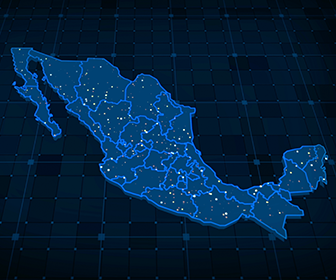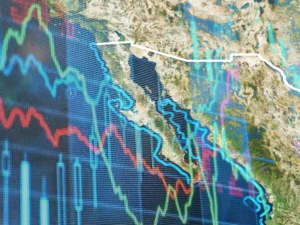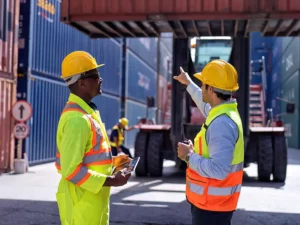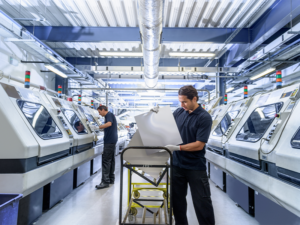When we are reviewing personal investment options, we are usually looking for three key elements: security of our assets, growth higher than inflation, and scalability. There are other considerations, such as our risk tolerance, and countless variables. The same happens with investors; every decision they make involves financial, personal, and emotional elements, and all of these factors play into the fascinating game of trends.
Economic Impact of the USMCA
According to Brookings, by the second half of 2023, since the introduction of the USMCA, a total of $83 billion has been collectively invested by the three countries in business assets in the region. This total is relevant in terms of investment, co-investment, and commitment to the future of the treaty. Breaking down this investment by country, the United States has contributed $60 billion, Canada $20.5 billion, and Mexico $2.8 billion, meaning our country has contributed 3.4% of the total investment to the treaty. Looking closely at where this investment has been captured, Foreign Direct Investment in Mexico has been $31.5 billion, or 75% of all investment from the three countries have flowed into Mexico.

Growth Sectors in Mexico
This is an investment that is rarely discussed but is significant, as it indicates that companies from the United States and Canada are betting on continuing to grow in Mexico or securing their installed capacity to meet the current and future market demand. We also need to analyze that foreign direct investment in our country comes due to proximity to the US market and to avoid tariffs imposed by the US on China. Three sectors have been identified for growth in Mexico: automotive, with an increase in exports of $94 billion; electronics, with $38 billion; and electric cars, with $22 billion. These three sectors and their investment will aim for two specific things in terms of the USMCA: first, to meet the labor content value for the automotive industry, which is to have a minimum hourly cost of $16 in the three countries, and to ensure that the capacity created stays in the region.
Now, how much can we grow? This responds to how scalable the investment will be. We must now refer to terms of capacity for the country’s most important export sector, which is manufacturing. As of the end of 2023, the United States was at a capacity of 79%, Canada at 79% as well, and Mexico at 83%. So, while we can grow, it’s not as much as countries like Vietnam, which has a capacity of 50%, and Indonesia at 73%.
Infrastructure and Sustainable Growth
Part of what we will be observing in the remainder of the treaty before the negotiation and agreement in 2026 is the “quality of the investment”. This is where we must accept that while we are growing with the current capacity, we cannot grow without energy infrastructure, which is one of the main bottlenecks for the country. According to the WEF, Mexico could grow organically by a minimum of 3 to 4% simply by having access to energy. This also highlights that foreign direct investment is only reaching existing operations; it’s not reaching supply chains for the most part. This is only for already established companies and in the form of fixed assets. For the same reason, we are not seeing a significant increase in new jobs.
Opportunities in Baja California
Currently, as we know, Baja California offers the region a capacity of over a thousand companies in the manufacturing sector, giving it an average compounded return on invested capital of 10% over the last 5 years, one of the highest nationally.
In conclusion, I invite you to reflect on the map of economic complexity worldwide. In the past 10 years, the United States has lost 3 places, Canada 21, and Mexico has gained 9. This is not only good news, but it also positions us as an increasingly complex economy, capable of receiving and maintaining investments. Moving us away from being seen solely as cheap labor and recognizing us as valuable talent in the global market.
Dr. Luis Manuel Hernández, Coordinator of the Nearshoring and USMCA Compliance Dialogue TableLI. https://www.linkedin.com/in/lmhg/
X. @LuisMHernandezG





